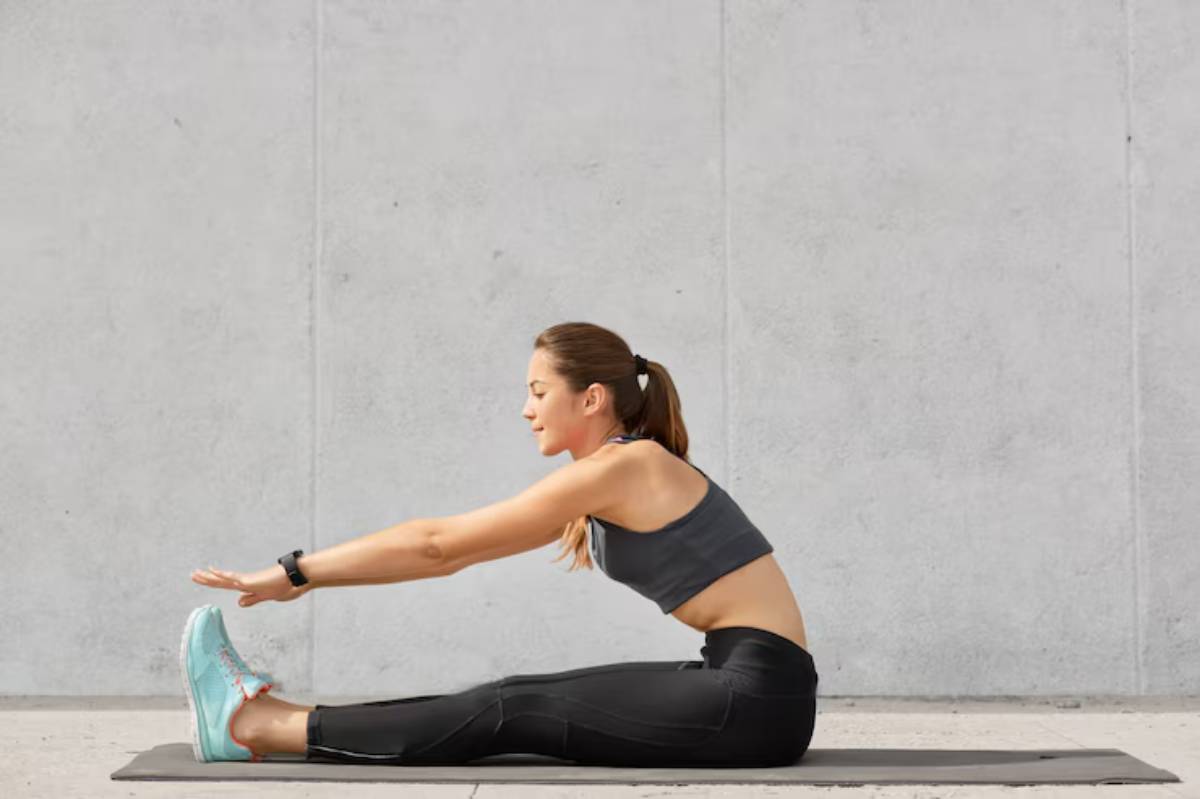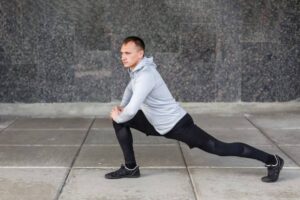The Fitness Blog

Dynamic Stretching Before Weights: Pros & Cons
Ever walked into the gym, eager to hit the squat rack, but skipped your warm-up because “you were short on time”? You’re not alone. Many lifters overlook what happens before the barbell, assuming that a few shoulder rolls and jumping jacks are enough to get going.
But here’s the thing: how you prepare your body can shape how well you lift, how fast you recover, and whether or not you get injured. Enter dynamic stretching, a form of warm-up mobility that’s taken centre stage in modern strength training.
In this post, we’ll discuss the pros and cons of dynamic stretching before weights, how it compares to static stretching, and when to use which method. You’ll get practical, no-fluff guidance to fine-tune your routine and stretch smarter—not harder.
What Is Dynamic Stretching?
Dynamic stretching involves controlled, active movements that take your muscles and joints through a full range of motion. Think of leg swings, walking lunges, or arm circles—any motion that mimics what you’re about to do under load.
Unlike static stretching (where you hold a position for 30 seconds or more), dynamic stretches are fluid, movement-based, and often integrated into the start of a workout.
They aim to:
- Raise core temperature
- Improve circulation
- Activate specific muscle groups
- Enhance joint mobility

The Rise of Dynamic vs Static Stretching
For decades, static stretching was the go-to warm-up method. But newer research challenges this long-held belief.
A widely-cited 2004 study in the Journal of Strength and Conditioning Research showed that static stretching before strength work can reduce muscular power output, potentially making you weaker during your lift.
Since then, more coaches and athletes have leaned toward dynamic stretching for warm-ups, leaving static holds for cool-downs or rest days.
Let’s compare the two:
| Feature | Dynamic Stretching | Static Stretching |
| Movement | Active | Passive |
| Duration | Short, repeated (5–20 sec) | Held (20–60 sec) |
| Goal | Prepare body for action | Lengthen muscles, increase flexibility |
| When to Use | Pre-workout | Post-workout or recovery sessions |
Pros of Dynamic Stretching Before Lifting
1. Enhances Range of Motion Without Compromising Strength
Dynamic stretches prepare your joints and muscles to move in the same patterns you’ll be using during training. That means better squats, cleaner presses, and smoother deadlifts—without the power drop-off linked to pre-lift static holds.
2. Boosts Neuromuscular Activation
Every rep you lift relies on brain-muscle communication. Dynamic movement stimulates the neuromuscular system, helping your body “wake up” and fire more efficiently.
This improved coordination:
- Helps stabilise heavy loads
- Reduces awkward movement patterns
- Sharpens mind-muscle connection
3. Improves Blood Flow and Temperature
As you move through dynamic sequences, you:
- Increase blood supply to working muscles
- Elevate muscle temperature
- Enhance elasticity in soft tissue
These physiological effects reduce stiffness and increase your tissues’ readiness to perform.
Cons of Dynamic Stretching Before Weights
1. Not Always Enough on Its Own
For individuals with limited mobility (tight hips, stiff ankles, etc.), dynamic stretching may not fully address long-standing restrictions.
What to do instead: Complement your warm-up with deeper mobility work during recovery sessions. To plan effectively, explore how to integrate recovery into your weekly routine.
2. Risk of Fatigue if Overdone
Doing too much dynamic movement—especially explosive drills like jumps or sprints—can drain your energy before you even start lifting. Keep your routine time-efficient and relevant.
Tip: Limit your dynamic warm-up to 5–10 minutes, focusing on target muscle groups.
Examples of Effective Dynamic Warm-Up Mobility

For Lower Body Days
- Leg Swings (front-to-back and side-to-side) – loosens hips and hamstrings
- Walking Lunges with Overhead Reach – opens hips, stretches quads, activates glutes
- Deep Squat to Stand – primes hamstrings and thoracic spine
- Ankle Bounces or Calf Raises – stimulates foot and ankle stability
For Upper Body Days
- Arm Circles (small to large) – warms shoulders
- Band Pull-Aparts – activate scapulae and rotator cuff
- Torso Twists – mobilises the spine
- Wall Slides – encourages scapular control
Done with intention, these movements offer a purposeful bridge between rest and effort, both mentally and physically.
When Static Stretching Can Still Help
Static stretching isn’t useless—it just needs to be used at the right time.
It’s great for:
- Cooling down after workouts
- Easing into sleep on rest days
- Improving flexibility over time
- Recovery days focused on soft tissue care
You might combine static stretches with other methods like foam rolling or breathwork. In fact, pairing breathwork with stretching for faster recovery can accelerate results and improve mental calm.
Common Misconceptions About Stretching Before Weights
“Stretching always prevents injury”
Only if it’s targeted and smart. A few hamstring pulls mid-squat won’t prevent shoulder instability during pressing.
“I don’t need to warm up—I feel fine.”
Feeling fine isn’t the same as being prepared. Dynamic warm-ups protect against subtle joint overload, especially in repeat lifting sessions.
“Stretching is enough for strength.”
Not quite. Stretching helps, but it’s not a substitute for movement prep or load-specific warm-up sets.
How to Structure a Dynamic Warm-Up
Here’s a basic structure you can use for most lifting days:
1. General Warm-Up (2–3 minutes):
- Jump rope
- Light cycling
- Jogging in place
2. Joint Mobility (2–3 minutes):
- Neck, shoulder, wrist, hip, ankle circles
- Cat-cow or spinal waves
3. Muscle Activation (3–5 minutes):
- Glute bridges, bird dogs, band pull-aparts
- Specific movements related to the lift ahead
4. Movement-Specific Prep (3–5 minutes):
- Squat patterns, hinge practice, scapula setting
- Barbell sets with increasing load
Who Benefits Most from Dynamic Stretching?
Dynamic stretching is especially useful for:
- Lifters with tight hips/shoulders
- Athletes doing compound lifts (e.g., deadlifts, cleans, squats)
- People training early in the day (helps “wake up” joints)
- Those with desk jobs who need to activate dormant muscle chains
Even if you’re a beginner, a few intentional moves can dramatically improve how your body feels under the bar.
Conclusion: Prime Your Body, Protect Your Progress
Dynamic stretching isn’t just a trendy alternative to static holds. It’s a practical, evidence-based way to prepare your body for serious strength work.
It helps you:
- Move with greater confidence
- Reduce the risk of injury
- Train harder, smarter, and more consistently
That said, like all good tools, mobility is best used with context. Keep your warm-ups short and specific, stay tuned in to your body’s needs, and remember: mobility doesn’t mean flexibility at all costs—it means control through your full range.
Next time you step into the gym, skip the lazy toe touches and give your warm-up the attention it deserves. Your lifts—and your body—will thank you for it.









